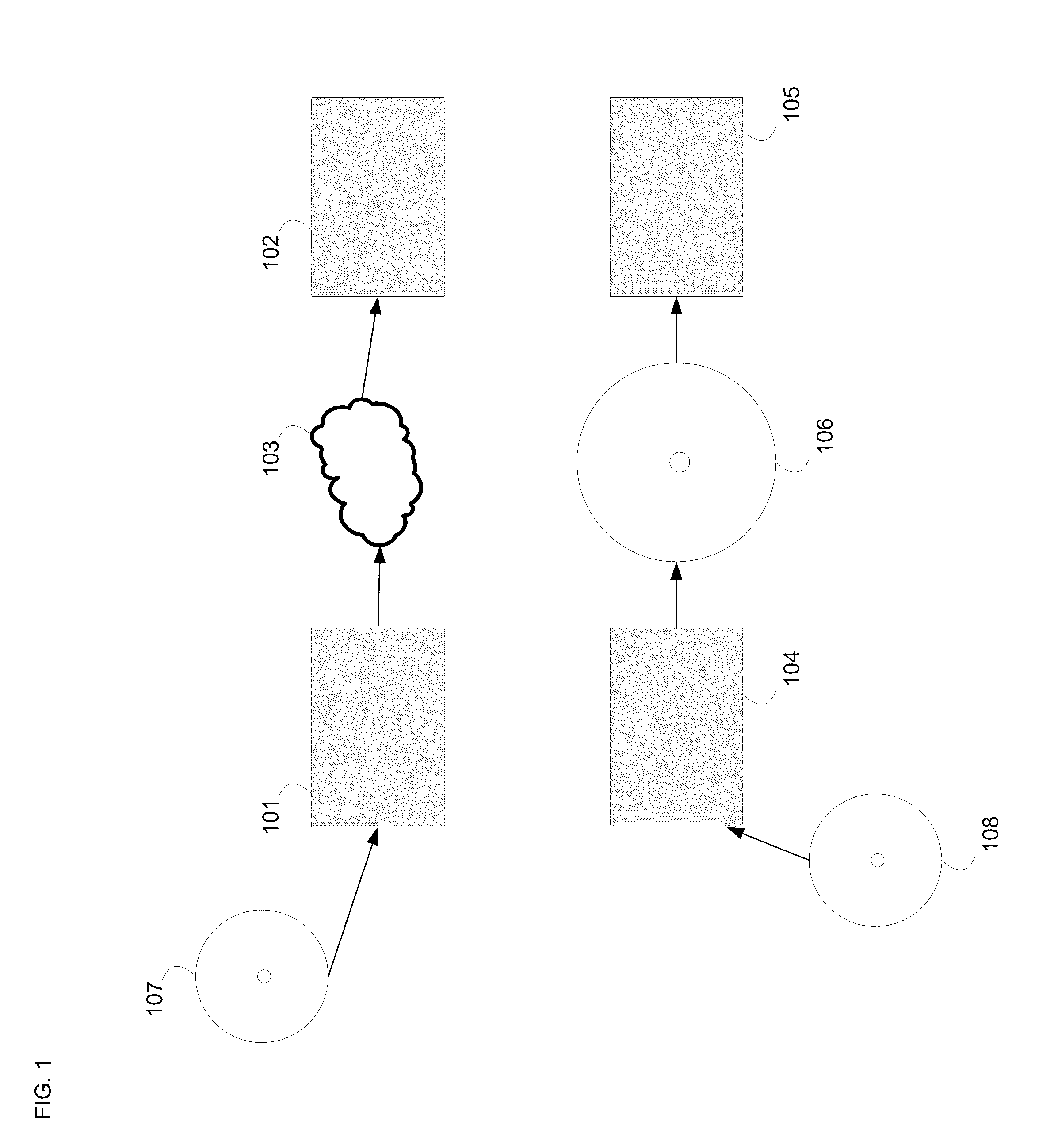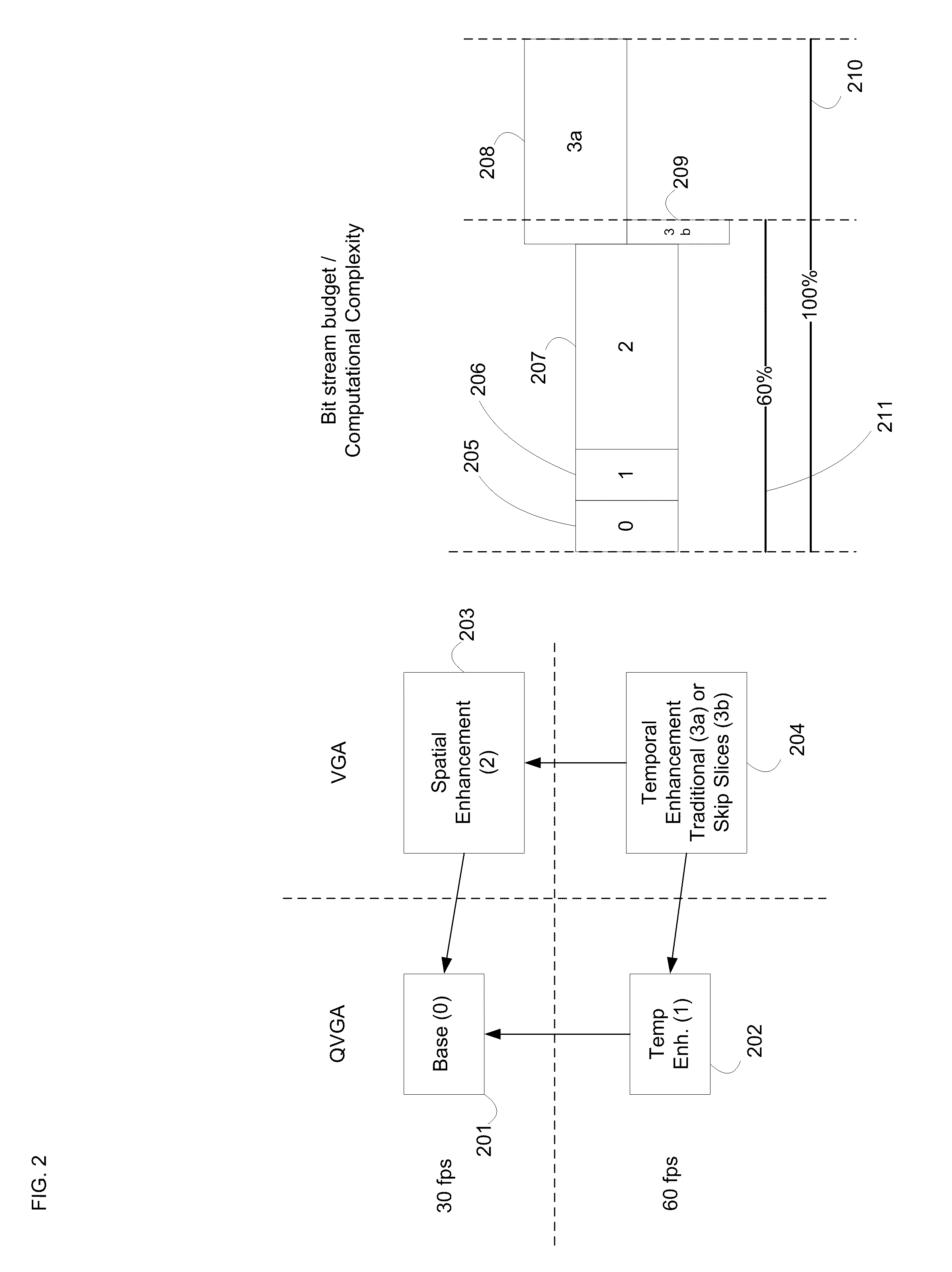Low Complexity, High Frame Rate Video Encoder
a high frame rate, encoder technology, applied in signal generators with optical-mechanical scanning, color television with bandwidth reduction, etc., can solve the problems of increasing both the computational complexity of encoders and the bitrate requirement, professional video conferencing is a disadvantage, and the complexity of encoding is not desirable from a coding complexity perspective, so as to achieve a very low bitrate overhead and enhance the effect of high frame ra
- Summary
- Abstract
- Description
- Claims
- Application Information
AI Technical Summary
Benefits of technology
Problems solved by technology
Method used
Image
Examples
Embodiment Construction
[0024]FIG. 1 depicts an exemplary digital video transmission system that includes an encoder (101), at least one decoder (102) (not necessarily in the same location, owned by the same entity, operating at the same time, etc.), and a mechanism to transmit the digital coded video data, e.g., a network cloud (103). Similarly, an exemplary digital video storage system also includes an encoder (104), at least one decoder (105) (not necessarily in the same location, owned by the same entity, operating at the same time, etc.), and a storage medium (106) (e.g., a DVD). This invention concerns the technology operating in the encoder (101 and 104) of a digital video transmission, digital video storage, or similar setup. The other elements (102, 103, 105, 106) operate as usual and do not require any modification to be compatible with the encoders (101, 104) operating according to the invention.
[0025]An exemplary digital video encoder (henceforth “encoder”) applies a compression mechanism to th...
PUM
 Login to View More
Login to View More Abstract
Description
Claims
Application Information
 Login to View More
Login to View More - R&D
- Intellectual Property
- Life Sciences
- Materials
- Tech Scout
- Unparalleled Data Quality
- Higher Quality Content
- 60% Fewer Hallucinations
Browse by: Latest US Patents, China's latest patents, Technical Efficacy Thesaurus, Application Domain, Technology Topic, Popular Technical Reports.
© 2025 PatSnap. All rights reserved.Legal|Privacy policy|Modern Slavery Act Transparency Statement|Sitemap|About US| Contact US: help@patsnap.com



